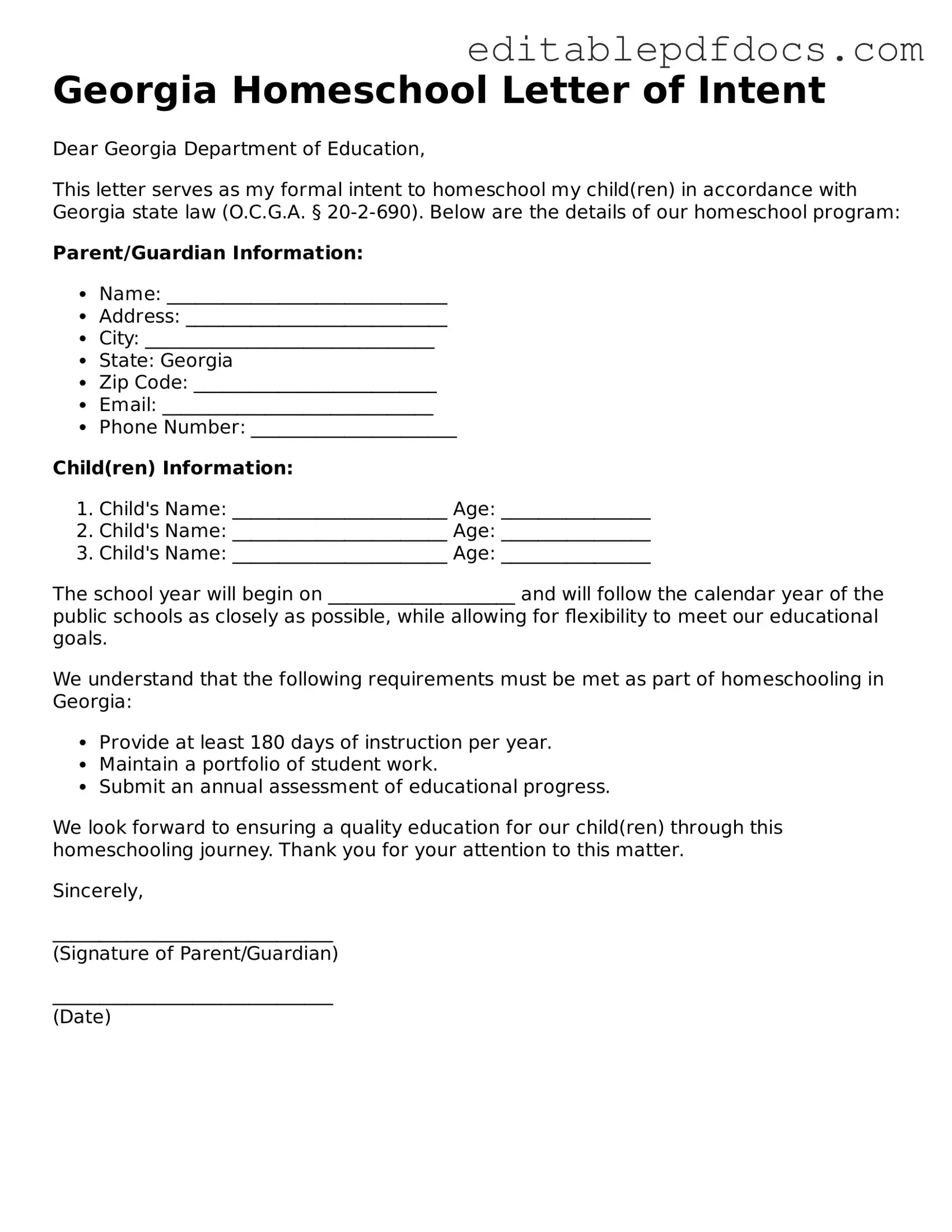For families considering homeschooling in Georgia, understanding the process begins with the Homeschool Letter of Intent form. This essential document serves as a formal notification to the Georgia Department of Education that parents or guardians intend to educate their children at home. The form requires basic information, including the names and ages of the children being homeschooled, as well as the educational curriculum the family plans to use. By submitting this letter, parents not only comply with state regulations but also take an important step in shaping their child’s educational journey. It's crucial to be aware of the deadlines for submission, as these can vary depending on when the homeschooling begins. Additionally, this form opens the door to a wealth of resources and support networks available to homeschooling families in Georgia. Understanding the nuances of this process can empower parents to create a tailored learning environment that meets their children's unique needs.
